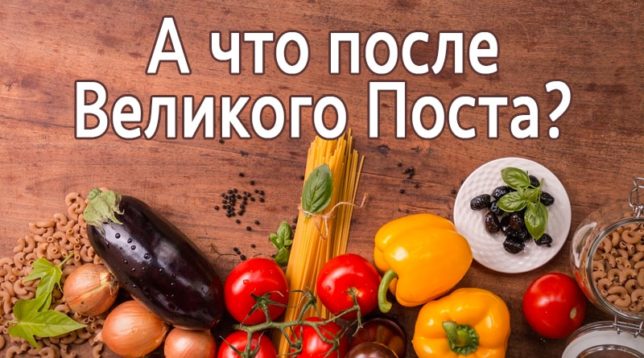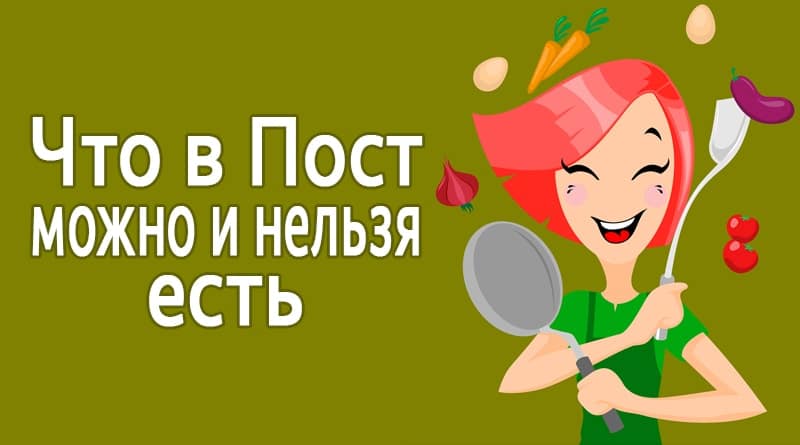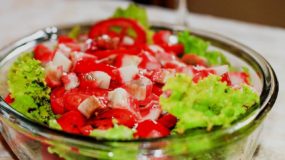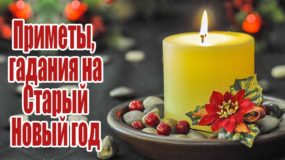The Orthodox Church connects the tradition of fasting with the Great Holidays, Sacred historical events and the Sacrament of Communion. Fasting is an ascetic practice, which implies a person’s abstinence from eating animal food, moderation in fasting, and rejection of other carnal pleasures.
In the days of fasting, the path of purification goes not only the body, but also the soul, freed during this period from bad thoughts, words and unkind desires. So, the main goal of bodily and spiritual abstinence is to acquire harmony between the two principles.
Main Posts on the Orthodox Calendar

Life is arranged in such a way that a person does not get anything in it without effort, therefore, before any great holiday begins, it is important to find out what main posts will be held this year according to the Orthodox calendar, how long they will last, what their history is and what lifestyle and nutrition they need stick on these special days.
The Russian Orthodox Church provides for four main posts:
| Title | Duration | Description | General Lenten Menu |
|---|---|---|---|
| Great Lent | From February 19 to April 7, 2018 | A spirit-led Savior was sent to the wilderness, where for forty days he was subjected to temptations from the devil. It is in honor of Jesus Christ and in the name of his suffering that Great Lent is held. | Refusal of food of animal origin and vegetable oil, practice of dry eating. |
| Petrov or Apostolic Lent | From June 4 to July 11, 2018 | Summer post, set before the feast of Peter and Paul. Starts on Holy Monday. | After a dry period, lean foods without oil, cereals, fish and mushrooms are allowed. |
| Assumption Post | From August 14 to August 28, 2018 | The fast is dedicated to the Mother of God, who was before ascension to heaven in prayers and abstinence from food. | Strict dry eating in the first three days of fasting, eating food without adding oil, allowing fish dishes, if the Assumption this year fell on Wednesday or Friday. |
| Christmas or Filippov post | From November 28, 2018 to January 6, 2019 | Winter Lent comes after Filippov Day and lasts until the Christmas holidays. Observing this post, people sacrifice gratitude to the Lord for the blessings that were given to them from Above during the year. | Fish dishes are allowed on special days when a particular Orthodox holiday coincides with certain dates. It is customary to feast on oatmeal - honey wheat grains or rice with raisins. |
The central (main) in the Orthodox church calendar is Lent, which is the preparatory stage for the Easter holiday. Every Orthodox Christian should know how to behave properly in this special period, what can and cannot be eaten, and what other obligatory rules are imposed by Lent.
Everyone who decides to fast does not pursue the dietary regimen as their first goal, but strive to achieve spiritual purification in order to meet the bright holiday of the Resurrection of Christ “renewed”.
The entire period of Lent is traditionally divided into four stages.
- Four decades, lasts the first forty days.
- Lazarev Saturday falls on the sixth Saturday of fasting.
- The Christian holiday, the Entry of the Lord into Jerusalem or Palm Sunday, is celebrated on the sixth Sunday of Great Lent.
- Holy Week or Great Week.
What traditions are observed during Lent?
The total duration of Lent is forty-eight days. The last week, the time of Holy Week, is devoted to thorough preparation for Easter.
- With the beginning of Great Monday, it is important to tidy up the house.
- On Tuesday - take time to wash and iron the laundry.
- The environment is intended for chores.
- Thursday - to get rid of garbage. Also on this day, according to tradition, they bake Easter cakes, which are not just a symbol of holiday bread, but the body of Christ himself.
- Friday is a special day of abstinence from any food, household chores and fun.
- On Saturday, all the hostesses again begin household chores - they bustle in the kitchen, paint eggs.
People spend the entire period of Great Lent in prayers, read spiritual books and confess, and refrain from eating non-fasting foods.
What foods can be consumed while fasting?

The time of abstinence from dishonest food does not cancel the variety of dishes; on the contrary, the special purpose of fasting is to gain a person's understanding of the true joy and sanctity of the process of eating simple food. Products are steamed, boiled, baked in the oven or grilled without the addition of oil and spices. The basis of everything should be: vegetables, fruits and berries, root crops, cereals, legumes, nuts, mushrooms.
This list of products does not imply only their strict use. You can deliciously diversify the menu without violating the canons of the post: bake bread cereals, make jam, boil bean stew and much more.
What meals can I eat
| Food category | Title | Ingredients | Recipe |
|---|---|---|---|
| First | Buckwheat potato stew |
| Boil the vegetables. As potatoes are cooked, cereals are added, and continues to cook until buckwheat is cooked. |
| Lentil Stew |
| Lentils are cooked with carrots for 3 hours, regularly mixed. Add salt, pepper and bay leaf. Chop the garlic 5 minutes before the dish is cooked. To dilute the density of the stew, you can add a little water. | |
| Cabbage Tomato Soup |
| Diced potatoes are sent to boil until half cooked, then finely chopped onions, cabbage and carrots (can be sliced) are added and seasoned with tomato paste (2 tbsp.), Bay leaf is added 5 minutes before the soup is completely cooked. For decoration, use parsley and dill. | |
| Lean cabbage soup |
| Potatoes are cut into 2 parts, onions into 4. Cabbage leaves are separated from the stump, cut and thrown into a broth with herbs, cooked, pepper and bay leaf are added. If celery root is used, it is cut into large strips or tinder on a coarse grater. Finely chopped carrots are mixed with garlic seasoning and introduced into cabbage soup. For pungency, season with red pepper. | |
| Second | Boiled potatoes with nuts |
| Washed potatoes are boiled in a peel, cooled, peeled and diced. Ground walnuts are mixed with garlic gruel, red pepper and salt.The spicy mixture is mixed with potatoes, seasoned with wine vinegar with shredded onions, the finished dish is decorated with fresh herbs. |
| Lean Potato Meatballs |
| Boil the potatoes, knead in mashed potatoes. Walnut oil is squeezed into a mixture of spices and herbs (a high-power blender is used to crush the nuts before the juice is separated), poured into a separate bowl. In a mixture of nuts and spices, pour water with vinegar diluted in it, add finely chopped onions and herbs. Combine with potato mass. Small meatballs are molded from the resulting “dough”, spread on a plate, making a small indentation in each ball, where nut butter is poured. | |
| Bean puree |
| Boil the beans until half ready, add finely chopped onions, salt. When the dishes are ready, strain the mashed potatoes, leave the broth for breeding bean mass. All season with nut crumbs, vinegar and garnish with herbs. | |
| Vegetable Barley |
| The washed barley is poured with water, brought to a boil and boiled over medium heat for 2 hours. In the process of cooking, add grated carrots, finely chopped onions and spices, bay leaf - 5 minutes before the dish is ready. | |
| Salads without oil | Prune salad |
| Finely chopped cabbage is ground with sugar and salt, squeezed juice. Prunes are peeled and soaked for 2 hours in hot water. Rub carrots with lemon. All ingredients are mixed in a large bowl. |
| Salad with carrots and pickles |
| Finely chop the cucumbers, add tomato juice, season with pepper and set aside for 20 minutes. Finely chop the carrots, combine with the cucumber mixture and serve. | |
| Carrot Salad with Apples |
| The apple is peeled, cut into strips, mixed with grated carrots. Sugar, salt are added, seasoned with vinegar. | |
| Pumpkin and Apple Salad |
| Pumpkin with apples is rubbed into chips, seasoned with lemon zest and watered with lemon juice. The mixture is sweetened with honey, nuts are chopped on top. | |
| Dessert | Cranberry Mousse |
| Squeeze juice from cranberries, boil and filter. Boiled cranberry squeeze, add sugar and semolina. When cooking, stir regularly. The prepared slurry is cooled, cranberry nectar is added, whipped with a kitchen whisk or mixer. Mousse is laid out on bowls. Garnish with whole cranberries. |
| Lemon Jelly with Rice |
| Rice is boiled with sugar. Agar is poured with water, heated to complete dissolution (do not boil!), Pour sugar, juice of 2 lemons. Heated again, avoiding boiling. Warm rice is poured with a jelly mixture, cooled and placed in the refrigerator. Frozen portions of rice jelly are poured with sugar-lemon syrup. |
Cooking Tips
- Dried fruits and nuts are suitable as a nutritive basis for a lean diet. They can be combined by seasoning with honey. A delicious dessert snack will saturate the body with energy for a long time, and also act as a source of vitamins.
- The opinion that in the post menu is poorer than usual is erroneous. From one root vegetables, you can cook various dishes. Using onions, cauliflower or broccoli, you can diversify your diet with health benefits.
- Greens and beans help digestion do the job.
- A hearty cereal breakfast prepared without the addition of milk can be combined with vegetables. And for lovers of sweet breakfasts, jam is suitable as an addition to the dish.
- Pasta dishes - open space for the manifestation of culinary fantasies. Recipes for cooking noodles will diversify the dining table, adding vegetable sauces and mushrooms.
- An alternative to vegetable oil for dressing salads is marinade or lemon juice. For eggs, there is also a substitute - for example, tofu, flax seeds, sunflower or pumpkin.
What foods are strictly prohibited in Lent
Subject to a strict ban on the use of products:
- Animal origin: meat, eggs, milk. However, on certain days, fish dishes - on the Annunciation (April 7) and Palm Sunday, are permissible. Caviar can be eaten on Lazarev Saturday.
- Vegetable oil is not allowed to be added to food throughout the fast, but cereals or salads can be seasoned on Good Thursday and holidays in honor of the saints - the Sevastian martyrs and St. Gregory Dvoeslov.
- Any sweets, including pastries.
- Fast food and alcoholic drinks.
- It is customary to spend the day of Clean Monday and the Great Heel without edible food.
Many consider the tradition of fasting ascetic, but conscious abstinence is a useful practice for the human body. All diseases come from ignorance of the measure. The exception for a while from the menu of fried, fatty, spiced dishes helps to establish normal digestion.
The Orthodox Church permits the relaxation of strict dietary rules during fasting for women in position, elderly people with serious illnesses and those who engage in heavy physical labor.
Recommendations for those who want to observe Lent

The time of Lent is ideal for the spiritual purification of man. It is very important during this period to observe special rules of behavior:
- Exclude the use of alcohol-containing drinks.
- Limit recreational activities.
- Make every effort to control emotions, avoid outbursts of anger.
- To pacify your flesh means to take the first step towards pacifying your spirit. Limited nutrition helps to properly realize the spiritual sense of self, to clear oneself of negative emotions and thoughts. If there is no goal, to cleanse the soul, fasting is simply dietary.
How to organize a diet after Lent

At the end of Lent, it is important to correctly return to your usual diet:
- Do not abruptly switch to food of animal origin. The digestive system will be difficult to cope with the digestion of meat after prolonged abstinence.
- It is recommended to start with a small piece of cheese or steamed chicken breast.
- It is important in the initial days after the end of the post not to overload the products.
- You need to eat in small portions several times a day, gradually increasing the contents of the plate, so as not to reload the stomach.
It is necessary to approach the practice of fasting consciously, having studied not only the list of allowed or forbidden foods, but also to set up your body for spiritual changes.
For modern people, the canons of the monastery’s charter are too demanding and tough, because many fasting, avoiding the experience of dry eating. A spiritual mentor in the church will be able to give individual advice for everyone on how to organize meals during Lent.










